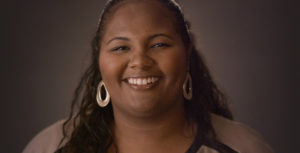Project Overview
Working at the intersection of art, the environment, and sustainable human systems, the Land Art Generator Initiative reimagines the role of clean-energy generation within urban and suburban communities. As wind turbines and solar arrays become ever more ubiquitous, all too often these structures are denounced by neighbors as “visual pollution” that defiles the landscape and wrecks the skyline. Seeking to break through such cultural roadblocks to climate-change solutions, the designer Elizabeth Monoian and architect Robert Ferry set out to construct a series of large-scale, site-specific public art installations that uniquely combine art with clean-energy generation. By transforming unloved energy devices into inspiring sculptures, the project aims to activate public space, build platforms for education, and turn power plants into tourist destinations—all while pumping clean energy into the grid. Through this multifaceted approach, the initiative also envisions a new model for public investment in renewable energy infrastructure. By combining the economic return from an array of sectors into a single capital investment, such installations reap the benefits of electricity generation alongside urban placemaking, technology research, tourism, and habitat protection. In creatively integrating infrastructure into urban design, zoning ordinances, and building codes, the Land Art Generator Initiative aspires to turn energy installations into monuments for future generations.
Five Questions
Learn more about this project
Meet our other 2015 awardees

New York
A model for activating human capital in rural places, this “living museum of contemporary rural life” has helped inventive rural residents ignite a fresh sense of cultural and economic opportunity.

ScholarCHIPS for Children of Incarcerated Parents
Washington, D.C.
To break the cycle of intergenerational incarceration, ScholarCHIPS supports college students in the Washington, D.C. area who are among the millions of children in America with incarcerated parents.

Washington State
Through a unique blend of peer mentoring, community farming, and “dirt therapy,” Growing Veterans uses sustainable agriculture as a catalyst for ending veteran isolation.

California
This peer-support program’s “healing to advocacy” agenda empowers women with incarcerated loved ones to push for social and policy reform, while boosting their economic resilience.

West Virginia
Tackling the economic, cultural, and environmental distress of West Virginia’s collapsing coal economy, Reclaim Appalachia creates new economic opportunities rooted in a vibrant spirit of place.

California
Bringing local fish into schools proves a powerful way to cultivate the next generation of ocean stewards, while promoting sustainable seafood and supporting a community’s fishing industry.

New York and North Carolina
To advance worker well-being, Coworker.org harnesses online tools to advocate for freelancers, independent contractors, and others in today’s gig-based workforce.

New York
A global network of tech-enabled partners uses advanced production tools to deliver life-changing prosthetic hands and arms to those who need them most.

 Learn More
Learn More